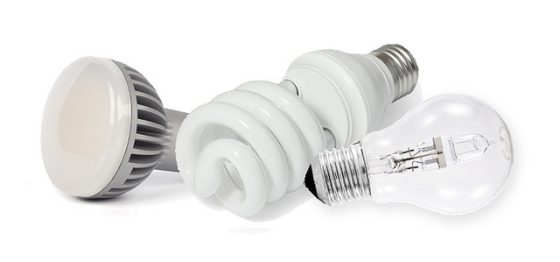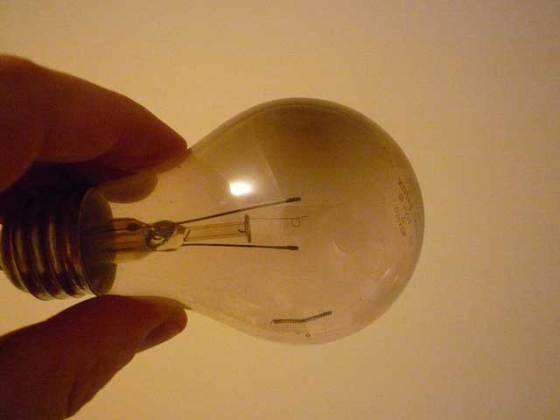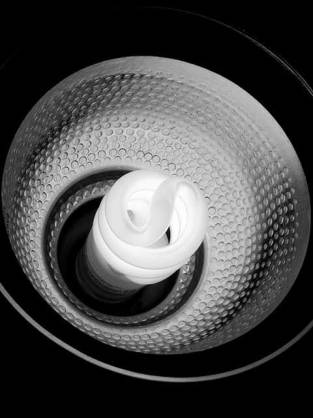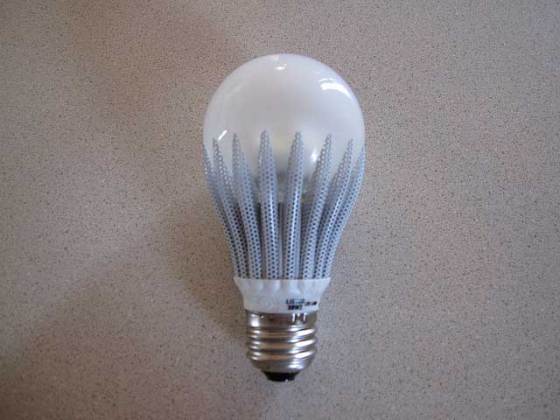Longevity of light bulbs and how to make them last longer
 Everybody would like to buy a light bulb which lasts at least as long as the box you bought it in claims it will. However, as I mentioned in the definite guide for declaration found on light bulb packages, the longevity of light bulbs is usually much shorter than it is declared on their package. In this article you’re going to find out how you can try to make your light bulbs last longer without shifting to other type of lighting.
Everybody would like to buy a light bulb which lasts at least as long as the box you bought it in claims it will. However, as I mentioned in the definite guide for declaration found on light bulb packages, the longevity of light bulbs is usually much shorter than it is declared on their package. In this article you’re going to find out how you can try to make your light bulbs last longer without shifting to other type of lighting.
I decided to write about most commonly used types of light bulbs today: incandescent, CFL and LED light bulbs. An important fact is that there are many variations of light bulbs that are using the same technology, and their longevity as well as ways to prolong it will be generalized.
Among other factors, the lifetime of any lamp depends on operating voltage, manufacturing defects, exposure to voltage spikes, mechanical shock and vibrations, how often you turn the light on and off, and ambient operating temperature. Make sure to check the condition of your light fixtures and find a way (or a person) to check the wiring.
In cases of high voltage or a bad power provider, a silicon diode cap can be screwed over the base of the bulb to reduce the voltage passing through. By lowering voltage, they also lover the generated heat, however, they also reduce the light output to some extent.
Before jumping to the section you are interested in, you should also be advised to buy light bulbs from companies with stricter quality control and brands you trust in. In long term, the difference in price between alight bulb of quality and a cheap light bulb pays off when it comes to frequency of their replacement.
Incandescent light bulb longevity and how to make it last longer
General Electric Company was the first to patent a method of making tungsten filaments for use in incandescent light bulbs back in 1906, and the method hasn’t changed a great deal during that time. Although they do have the lowest initial cost, compared to CFLs and LED light bulbs, incandescent light bulbs have the shortest longevity and highest energy consumption for the same amount of lumens (light) they are able to emit. So, how to make them last longer?
As mentioned in article about declaration found on light bulb packages, most household bulbs which operate on higher voltage than declared lose around 60 percent of the declared life. That is why buying light bulbs with more volts (V) than it is proposed by standard in your country can prolong their operation. Another two factors which influence the longevity of incandescent light bulbs are temperature and vibrations.
Most incandescent bulbs have a tungsten filament which heats up as electricity passes through. The heat, which produces the light, makes the filament fragile and wears it off over time. This part will heat up faster as it has a higher resistance (P = I2R), thus causing further thinning of the already thinnest part. You should also enable the light bulb to dissipate the heat more easily and lower its exposure to cold temperatures.
The best way to counter this effect, and stick to usage of tungsten incandescent light bulbs, is to install a continuous (dial type) dimmer switch. By slowly turning on a cool light bulb, you prevent surges of electricity from rushing through the filament. Unlike some of the old dimmer switches, modern dimmers do lower energy consumption as well. Therefore, turning down the maximum amount of light to the amount you actually need makes your electricity bill lower, and your light bulb lifespan longer.
Incandescent light bulbs are also sensitive to vibrations that may come from slamming doors, machines, shocks or even noise. The solution to this problem is usage of vibration resistant fan bulbs or rough service light bulbs. These bulbs have an extra filament that reduces the vibrations. Unlike most standard incandescent bulbs which last anywhere between 700 and 1,000 hours, rough service light bulbs can withstand vibrations and can generally last 2 to 10 times longer.
CFL longevity and how to make it last longer
Compared to incandescent light bulbs, Compact Fluorescent Lamps (CFLs) rated lifespan is typically 8 to 15 times longer (6,000 to 15,000 hours). CFLs produce less light over time and it is expected that they produce 70–80% of their original light output by the end of their projected lifetime. But there are other factors that shorten the lifetime of CFLs you should be aware of.
Just as with incandescent light bulbs, constant exposure to voltage which is higher than their stated operating voltage and vibrations lower the lifespan of CFLs. Before even thinking how to make them last longer, you have to make sure that you buy the right type of the CFL for your need.
For example, if you use a higher wattage CFL in any sort of closed fixture the heat that is generated by the light bulb becomes trapped in the can and will overheat the ballast and making it last up to 70% less than declared! Another common problem is the fact that people expect from ordinary CFLs to serve as good outdoors lighting where they can run constantly, but you need to know that those CFLs don’t perform well on low temperatures. Aside weaker light output and longer time needed to achieve it, they tend to last far less then stated. CFLs are also found to be sensitive to humidity.
The life of a CFL is significantly shorter if it is turned on and off frequently. While you may not turn your light on and off every 5 minutes, a 5-minute on/off cycle the lifespan of a CFL reduces its lifespan to life of an incandescent light bulb. As a solution to this problem, you can consider using CFL with electronic ballast (dimmable CFLs) rather than ones with older fixed ballast. The electronic ones generally tolerate powering on and off much better.
So if you plan using them outdoors, in closed fixtures, or with dimmer switches, you need to buy specially marked (and more expensive) bulbs that match your needs.
Another problem cheaper CFLs have lays in their electronics which can break faster than claimed. Although the heat they generate is far lower compared to incandescent light bulbs, it can influence the electronics located in the base of CFLs. If you use your CFL in a floor lamp, where the ballast is located bellow the rest of the lamp, the heat generated by the lamp goes upwards and it barely affects the electronics.
In a more frequent case, the ballast and the base are screwed above the rest of the light bulb. The temperature which goes upwards makes the ballast contest suffer higher stress, thus significantly decreasing the lifespan of the bulb. As an alternative solution to more expensive versions of CFLs, you can try using fixtures where you screw the bulbs sideways. That way, you make their lifespan last somewhere between two previously mentioned cases.
LED light bulb longevity and how to make it last longer
Compared to incandescent light bulbs and CFLs, LED light bulbs have the longest life span and the lowest energy consumption. However, their current initial cost makes them less acceptable to average consumers. They generally last between 25,000 and 50,000 hours, and have many other advantages over other types of lighting – making this the shortest segment of this article.
These bulbs are less sensitive to vibrations and shocks, do not mind the cold ambient to operate in and light up instantly. However, although they do operate at the lowest temperature compared to CFLs and incandescent lights, they do suffer from the same problem as CFLs due to electronics in them. The same rules about light bulb orientation apply for LED light bulbs, so if you haven’t read the last 2 paragraphs in the CFL section you can scroll a bit up.
So, aside providing proper power supply which can be wrong due to wrong installations, the best way to make LED light bulbs last longer is to think about their orientation, opting for higher quality LED light bulbs with better heat sinks and electronics, and providing them environment where they can get cooled more easily.
In one of our future articles, we’re going to make a breakdown about power consumption and environmental impact of different kinds of light bulbs.













Didn’t even know about fan bulbs and rough service light bulbs!
Brightness and lifespan are incandescent tradeoffs unfortunately, in the voltage and rough service workarounds the key is the brightness you want.
No good having long lasting dim 100W bulb when a shorter lasting series of brighter 75 W bulbs would use less energy and cost less overall.
“Americans Brighter than Europeans”
Pretty nice read and thanks for the tips. Me and my family opted for CFL and LED combination which suits our needs and the bills are much lower and we didn’t need to replace any of those bulbs for the last 2 months.
Where is the story about the power consumption environmental impact of different types of light bulbs?
author
Glad it worked out for you Patrick, the article about the power consumption environmental impact of different types of light bulbs should be published within 7 days.
I have flood lights that are not lasting longer that a month. Before the last ones are lasting less than a month. I turn them on and off , instead of leaving them on 24 hrs a day. When I left them on they lasted for several months and years. The new ones are from Wal-Mart and do not last longer than a month.
The life of an incandescent bulb increases inversely as the 7th power of the voltage. Therefore an 10% reduction of the applied voltage increases the bulb life by 2.1 times. Buy bulbs rated for 130 V instead of 115 volts increases there life by 2.4 times.
LED Bulb is best lamp between these.
I bought the regular flood lights that come two in a pack from wal mart and they don’t last a month so I am going start using the LED floodlights. You only live once so why not spend a little more in order to save a little more.
I use a dimmable LED outside on a lamp. I have a few options for the lamp, either dusk to dawn or motion which switches the LED on and then shuts off after 6 minutes. The light uses 4.5 watts of power, is it better to use on motion or dusk to dawn.
Some people believe a regular lightbulb(40-60 watt) would have longer life if left on continously than one that is turned on and off, as in daily use. I thought the life of a bulb is also determined by usage. The hours or life of a light bulb is determined by both, isn’t it? Thanks for reply, C.M.
What about fridge lights they seem to burn out about every 1-2mths if we are lucky ,i have only seen the same type of bulb regards Bryan.
The article doesn’t clarify whether turning LED lights on and off also decreases their lifespan, as it does for incandescent and CFL bulbs. i.e. under-counter lighting in the kitchen…
I am a fan of the silicon diodes as I acquired a bunch at low cost and they seemed to have made a difference. Agree with the need to avoid no name bulbs unless you have experience with the producer. This will sound strange at first but the heat by-product of incandescent bulbs can be irrelevant during that part of the season during which you are already heating your house. What you lose in the inefficiency from the bulb you gain by the reduction of heating to the home and with a light bulb you are generally putting the heat where it is needed most, next to you. This means a incandescent bulb might be seen differently by someone living in northern Minnesota vs someone in Miami. Conversely you might want to go with a CFL in July if you live in Duluth. The same could be said for most appliances which have similar ECO ratings.
Also like the bulbs that have chips in them that go off after so many minutes (think they were called smart bulbs.) These are great for closets or other parts of the house you do not frequent and in which you might exit without turning off the light. The bulb are also of better quality in my experience.
Heat does not “go upward.” In fact, heat does not have a direction. Thermal RADIATION has a direction, but this is not influenced by gravity, at least not on the scale of which we speak.
What the article was talking about was the CONVECTION of warmed air, which is upwards.
author
I do apologize for my late reply, for a while I forgot all comments are moderated and there were no notifications of new ones.
@Lynne nearly all electric appliances shorten their lifespan due to on/off cycle. It also depends a lot on your electricity provider, your house and wiring there… However, in comparison to other two mentioned bulbs, LED bulbs are much less affected by turning them on/off.
@Paul Yes I saw NASA video of fire in space, but people already complained the site uses terms they need to look up to. It’s hard to balance and don’t simplify too much.
@Carolyn Moore there was an episode of Myth Busters where they busted that claim, both regarding power savings and longevity.
@Greg It depends on the way you want to use it, it should perform well in both cases although it doesn’t seem too bright if you need to lit a larger area
@Bryan Parry Must be something in installation of it. If proper for your fridge, light should last much longer since those are usually low power consumption lights that don’t burn over fridge’s lifetime.
@John A lot changed in last 4.5 years and I’m glad LED bulbs progressed better than expected.
Who published this?
Halogen lamps are the worst for burning out almost as soon as you buy them so Over the years I have done quite a bit of research to find out why and how to prolong life for ridiculously long periods of time. My Halogen down lights in my bathroom for example are all still going strong now for over 15 years whereas the ones in my kitchen all burnt out within weeks and have now been replaced with LED lamps. I regret to say however that even the LED lamps haven’t lasted anything like as long as the bathroom lights. So what’s the trick?
Turns out that Halogen lamps burn much hotter than regular filament lamps & this means that the resistance change between on and off is proportionately greater too. What kills halogen lamps is the sudden surge of high current when you turn them on and this is down to an inherently low OFF resistance. So the solution to the problem is simply to limit the turn on current until they warm up. In the bathroom I am using a good old fashioned transformer which saturates during switch on. There is a much simpler & cheaper solution however and that is to use a so called NTC device in series with the lamps. (that is negative temperature coefficient device). These work the opposite way round to filament lights. At off time they have a high resistance but as they warm up when ON so the resistance drops. In my garage I’m driving 20 halogen lamps (normally unheard of) in series with an NTC and nothing has failed in 3 years!.
can I get more info on silicon diodes.-years ago my husband placed light fixture that held 2 bulbs in our closet-did something that cut the wattage ,giving enough needed light that stayed on- the bulbs functioned for a really long time. WHEN WE REMOVED THE BULBS TO REPLACE THEM – THE DIMMING PROCESS DID NOT WORK.SINCE HE HAS PASSED AWAY I CANNOT FIGURE OUT WHAT HE DID- ANY CLUE WOULD SURE HELP
author
Good day Ceci,
Not sure of the configuration, but if nothing else was changed, were same type of bulbs used? Some LED bulbs are not dimmable.